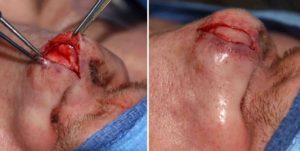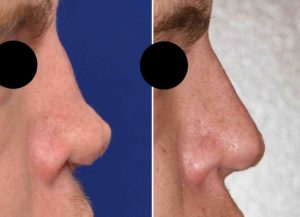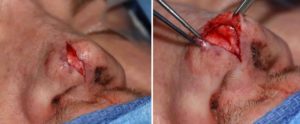Background: The evolution of rhinoplasty becoming a nose reshaping operation with more predictable outcomes took a major step with the introduction of an open rhinoplasty approach. Being able to see the cartilage and bone structures that are to be manipulated offers an obvious aesthetic advantage. And to do so with a negligible columellar scar adds to the benefits of this rhinoplasty approach.
But in the history of rhinoplasty the open approach is not entirely new and various other skin incisional accesses have been done. While incredulous today an incision down the center of the nose has been historically used for hump reduction. Open tip approaches with rim incisions have also been used in some of the original descriptions of cleft rhinoplasty particularly that of the bilateral cleft nose.
Certain craniofacial disorders may require removal of skin from the nose due to initially wide set eyes and nasal skin redundancies. With an existing nasal scar from such procedures the approach to an open tip rhinoplasty may be altered.
Case Study: This young male had a prior history of congenital naso-orbital surgery which left a midline scar down the center of the nose. Prior rhinoplasty surgery has been done with cartilage grafts to build up his nose but there remained a cleft tip and there was benefit ti further dorsal augmentation.


Highlights:
1) Making a vertical incision down the tip of the nose is an unusual form of open tip rhinoplasty.
2) With an existing scar down the tip of the nose, the decision to use that for access for the rhinoplasty offered direct access.
3) Nasal augmentation can be done using a variety of materials of which Alloderm is one viable option that does not require a harvest site.
Dr. Barry Eppley
Indianapolis, Indiana



